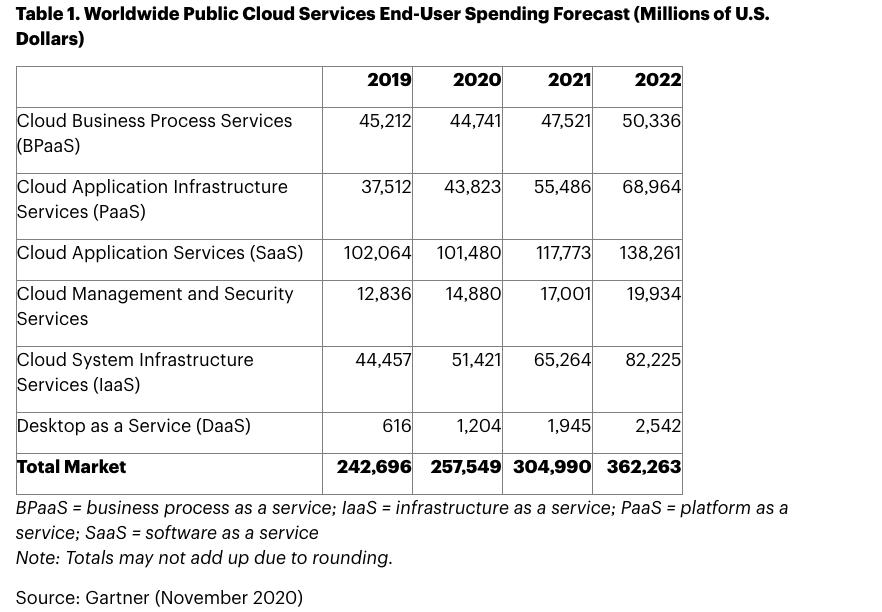The Best Enterprise Cloud Tips For 2023
Enterprise Cloud (EC) provides a uniform environment for a pay-as-you-go (PayGo) consumption model across public, private, and distributed clouds. EC affords organizations the ability to scale and deliver highly distributed infrastructure globally to support their business. The model in 2021 for Enterprise Cloud distribution will be on focused multi-cloud expansion while incorporating more remote users.
The enterprise cloud is a model for IT infrastructure and platform services that delivers the advantages of public cloud services for enterprise applications without compromising on the value distributed by private data center environments. Originally, most organizations associated EC with their Private Cloud built into the datacenter on platforms such as VMware and others. Today, Enterprise Cloud is more of a mix between the public, private and hybrid cloud options. Many companies will continue
Enterprise Cloud Characteristics:
- Various infrastructure stacks – Full-stack infrastructure and platform services deliver turnkey infrastructure for any app at any scale, anywhere, delivered through a combination of on-premises data centers and public cloud services.
- SDWAN On ramping – The ability to rapidly & elastically architect with a several clicks a fault-tolerant virtual circuit connecting to other SaaS/IaaS/PaaS environments. Simply building a Virtual Private Cloud Connectivity Connectionbetween two clouds, avoiding a traditional carrier process.
- Mobile & Proximity based reach – Launching applications globally and closer to users provides them the option to customize & cater to anyone anywhere. SaaS options and Unified Communications could not thrive without this model.
- Consumption Elasticity – Provides organizations the ability to turn up and turn down instances required not available in the traditional datacenter.
- Innovative Security posture – Taking advantage of key resources such as Web Application Firewall (WAF)and Bot mitigation affords a business the ability to use any cloud resources protected agnostically.
EC will continue place additional reliance on expansion and not just in core infrastructure.

Where is Enterprise Cloud heading?
- Multi-cloud– Organizations will continue to remove the vendor lock-in threat by driving to a dual cloud strategy. This will include traditional public IaaS and Enterprise cloud. Container driven environments coupled with Zero Trust access into these enterprise environments will continue to expand.
- FinOps– Balancing the blend of understanding scale, speed and agility with financial governance will be paramount. Tech teams must work with their financial counterparts to ensure they are both paddling upstream for success.
Hybrid Cloud: The continued beacon for Enterprise Cloud
Hybrid Cloud is when an organization utilizes both their Enterprise Cloud of Public and Private instances combined with datacenter colocation services. Colocation in the datacenter either a private deployment or a common 3rd party Colo provider is where Hybrid Cloud lives. Organizations still have application workloads, storage or other proprietary data stores which must live in colocation facilities and can’t expand into cloud. This is usually a derivative of their applications not starting as a cloud native environment and re-writing would be costly. However, the advent of EC with Hybrid Cloud now affords both environments to connect seamlessly typically in Cloud Networking models.
IBM recently announced the acquisition of Turbonomic for Hybrid Cloud AIOps and you should expect to see further M& in the ecosystem occur through 2021.
The first step in maximizing Enterprise Cloud including across Hybrid Cloud or Multi-Cloud is to begin with the architecture, followed by agility and proximity to the end users. Often, the most dynamic and well-built Enterprise Cloud infrastructure is deployed with good intentions only to have sub-optimal results due to network connectivity. Each company, cloud and access are unique and must be well-thought out otherwise your Dev & IT teams just spent a lot of time and expense unnecessarily.
Recent Posts
- AI-Powered Humanoid Robots: Transforming Business, Homes & Connectivity
- Top IT & Network Design Consultants in Boston and New England: Macronet Services
- Top AI Consultants in New England: Why New Hampshire’s Macronet Services Shines in Boston and Beyond
- IXPs in the US and Internet Peering
- Top Tips for a Winning Agentic AI Contact Center for 2025
Archives
- June 2025
- May 2025
- April 2025
- March 2025
- February 2025
- January 2025
- December 2024
- November 2024
- October 2024
- September 2024
- August 2024
- July 2024
- June 2024
- May 2024
- April 2024
- March 2024
- February 2024
- January 2024
- December 2023
- November 2023
- October 2023
- September 2023
- August 2023
- July 2023
- June 2023
- May 2023
- April 2023
- March 2023
- February 2023
- January 2023
- December 2022
- November 2022
- October 2022
- September 2022
- August 2022
- July 2022
- June 2022
- May 2022
- April 2022
- March 2022
- February 2022
- January 2022
- December 2021
- November 2021
- October 2021
- September 2021
- August 2021
- July 2021
- June 2021
- May 2021
- April 2021
- March 2021
- December 2020
- September 2020
- August 2020
- July 2020
- June 2020
Categories
- Uncategorized (1)
- Security Services (71)
- Cloud SaaS (60)
- Wide Area Network (307)
- Unified Communications (196)
- Client story (1)
- Inspiration (9)
- Tips & tricks (25)
- All (19)
- Clients (12)
- Design (3)
- News (270)
- Music (1)
- Sports (1)
- Travel (1)
- Artificial Intelligence (3)




